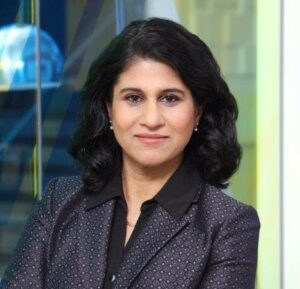 In this episode, joining us is Jayshree Seth, a leading STEM advocate and Chief Science Advocate at 3M, as she shares her insights on the science of innovation and thought leadership. You’ll learn from one of the top science advocates in the industry about how to lead with purpose and drive meaningful change through science.
In this episode, joining us is Jayshree Seth, a leading STEM advocate and Chief Science Advocate at 3M, as she shares her insights on the science of innovation and thought leadership. You’ll learn from one of the top science advocates in the industry about how to lead with purpose and drive meaningful change through science.
In the ever-evolving world of science and technology, thought leadership plays a critical role in shaping the future. One of the most notable figures in this space is Jayshree Seth, Chief Science Advocate at 3M and the author of The Heart of Science: Engineering Fine Print. This book, published by the Society of Women Engineers, dives deep into the intricacies of science, engineering, and the importance of diversity in STEM fields. But beyond the book, Jayshree’s work extends into thought leadership, innovation, and advocacy, making her a unique voice in today’s scientific community.
A Glimpse into The Heart of Science: Engineering Fine Print
The Heart of Science: Engineering Fine Print is more than just a book; it is a manifesto for how science and engineering can be harnessed to make meaningful impacts in society. Jayshree Seth’s experience as a Corporate Scientist at 3M, where she holds 80 patents, provides her with a unique vantage point. Her journey from earning a Ph.D. in Chemical Engineering to becoming the first Chief Science Advocate at 3M is a testament to her expertise and dedication to innovation.
This book offers insights into how engineering and science are not just about solving problems, but about leaving imprints that shape our world. Jayshree emphasizes the importance of diversity in STEM, not just as a moral imperative, but as a critical driver for innovation. Also, before this book was published, the first The Heart of Science book, entitled The Heart of Science: Engineering Footprints, Fingerprints, & Imprints, was created in 2020.
Thought Leadership: A Necessity in Today’s World
Jayshree’s recent work on thought leadership provides a roadmap for aspiring leaders in any industry. Her insights are timely, especially given the increasing importance of thought leadership in driving change and innovation. In a recent article for Authority Magazine, Jayshree shared “5 Things You Should Do To Become a Thought Leader In Your Industry,” emphasizing the need for authenticity, continuous learning, and the courage to challenge the status quo.
Jayshree’s thought leadership is not just theoretical. It’s grounded in her collaborations with top scholars like Prof. Amy Edmondson and Prof. Rita McGrath, where they explore topics such as leadership communication and innovation management. Her frameworks, like “Acing Communications: Do This, Not THAT!” and “Leak-proof Your Leadership,” offer practical advice for leaders looking to make a lasting impact.
The Role of Thought Leadership in STEM
In her role as Chief Science Advocate, Jayshree Seth has been a vocal proponent of increasing diversity and belonging in STEM fields. Her recent paper in Nature on “Purpose reflection benefits minoritized students’ motivation and well-being in STEM” highlights how reflective practices can significantly impact the motivation of underrepresented groups in STEM. This research is a powerful example of how thought leadership can be used to address some of the most pressing challenges in the field.
Jayshree’s work is not just about promoting diversity for diversity’s sake. She argues that diversity in thought and experience is critical for innovation. In her TEDx Talk, “Why I Reframed My ‘Why’ – The Context of Purpose,” she discusses how finding and reframing one’s purpose can lead to greater innovation and fulfillment in science and engineering.
Conclusion: A Call to Action
Jayshree Seth’s work is a powerful reminder of the importance of thought leadership in driving innovation and change. Whether through her books, articles, podcasts, or talks, Jayshree continues to inspire and challenge the next generation of leaders in STEM. The Heart of Science: Engineering Fine Print is not just a book; it’s a call to action for all of us to use science and engineering to make a difference in the world.
You may also refer to the transcripts below for the full transciption (not edited) of the interview.
Greg Voisen
Welcome back to Inside Personal Growth. This is Greg Voisen, the host of Inside Personal Growth, and joining me on the other side, actually, from the St Paul, Minnesota area, and also an employee with 3m is Jayshree Seth, and we're going to be speaking about her book and her movement and cause, but the book is called The Heart of Science Fine Print. She's got two books out, but we will be showing that book on our website. Good day to you. How are you doing?
Jayshree Seth
Good, good. How are you, Greg, thanks for having me.
Greg Voisen
I'm fine today, and it's a lovely day, and I hope for you that we can help you get your message out about what it is that you're doing. I'm going to let my listeners, Jay Sheree know a little bit about you. She's a corporate scientist at 3m she she leads applied technology development for industrial adhesives and tapes division. She joined 3m in 1993 after an MS and a PhD in Chemical Engineering from Clarkson University New York. And she currently holds 72 patents for a variety of innovations with several additional pending patents. Shree is a distinguished alumni award recipient from her alma mater, and that's R-E-C in India, and N-I-I-T, is it Tricy? Tracy?
Jayshree Seth
Yeah, it's regional engineering college, so rec, but it has a new name now, because I graduated eons ago.
Greg Voisen
Yeah. Well, we all did in 2018 using her scientific knowledge and tech, technical expertise and professional experience to advance science and communicate the importance of the benefits in science and everyday life. She's also a member of Carlton society, which is 3m Science and Engineering Hall of Fame. She is the fourth woman and the first female engineer to be inducted into that she's also the first ever winner of the gold Stevie Award in the new female leaders, a new female thought leaders of the Year category in the 18th annual Stevie awards for women in business, 2021 and we're going to be talking about her work with the Society for women engineer, the STEM program, and all of the work that she's been doing. She serves on the board of science and Museum of Minnesota, and on the Inner Engineering Advisory Council for Clarkson University, and she lives in Saint Paul area with her two children and her husband also a three Emmer. Okay, well, you guys must have a code for that three Ember thing. Last time I was on it, was showing her my sticky notes. Everybody can relate to sticky notes. And she was telling me about the 93-year-old man who is still alive, who actually created the glue for that. What was his name?
Jayshree Seth
Again, he created the actual product. The glue was another gentleman spent silver. But the person who created this application is art fry.
Greg Voisen
Art fry, so innovator, yes, yeah, look up art fry. That would be a great story. I should have him on this podcast, with your help that will happen. So look, we're here to share a little about your own personal journey and the impact that your family and surrounding had, coming from India, coming from, as you said, a family of privilege, but also a family that was really focused on education. Do you mind setting the stage for the podcast by letting our listeners know just a tad bit about that, please. Yeah. So
Jayshree Seth
to me, having an environment of academic achievement and having an environment of focus on education, that is a privilege. So I grew up on the campus of an engineering institution. My dad was a university professor. He was an engineer with a PhD himself. We lived on the campus housing, so on the campus, in the campus housing, so surrounded by STEM professionals, you know, science, technology, engineering and math, and it was pretty much expected of us, all kids on the campus, you know that you're going to study hard, you're going to prepare well, and you're going to get admission to the hometown college. So this is the kind of orientation we we grew up in. It certainly shaped my educational journey. It influenced my path. And despite thinking. I was not the typical science and engineering type, but it was like, literally in the water. We used to joke that we're going to all have to study and get into the hometown institution, because what a great opportunity with an institution right there where we're growing up. And it also shaped my world views. Yeah, you know, these days I often think about how I grew up and the role it played. So Greg, it was a block of six homes right at any given time, we had more than five religions represented, and in this block of six, you could hear six different languages on any given day, including English that was spoken by the American family of a visiting professor. You could smell regional cuisines from all over India. We had all the regions represented. All of us were from different states. There was a kid with physical disability. There was one who was neuro divergent. There were two kids who had been adopted, you know, so religion and language or customs never got in the way we all played together. We spoke that that that universal language that all kids who want to play together develop and understand. So these differences also really enrich to my childhood, and honestly, I thought that's how the world was. So that was, again, another perk of growing up in faculty housing on a college campus. So I like to say that I have a strong foundation highly educated family growing up at a time when a woman was a leader of our country and pretty much every neighboring country, and that is the privilege I have experienced. Not many people can say all these things that I just said, No, I am filled with gratitude for growing up in that family in that time and place, and I recognize that privilege, and that's why I also am really emboldened with the responsibility that it
Greg Voisen
brings. Well, it's a great story, and I can't wait for the US to have a woman leader as our president. So I know that I'm might be ticking off some other people, but too bad it's my podcast. I think we're we're we need some feminine energy in the White House. Would be good to have some feminine energy there. Now look, you were asked to be the first ever Chief Science advocate at 3m What does the role entail, and why did you agree to take on that position?
Jayshree Seth
That's a great question. So we care about science at 3m That's what fuels our innovation and products like the post it notes that you really love and our purpose is to unlock the power of people ideas and science and reimagine what is possible. But we also know that there can be a negative consequence if people don't have a positive perception of science, and that is why I was called upon to be the company's first ever Chief Science advocate. That's a role that doesn't exist anywhere you can Google it, but we wanted to stand up for science. And in 2018 my role was announced, and when they asked me, I was like, I don't know if I can do this. You know, I never thought of myself as a science and engineering type. I was always interested in the human context. I was always interested in the pro social goals, and I couldn't really understand as a child how that linked up with STEM feels, because nobody talked about that. I had my share of struggles through graduate school, I became a scientist and an engineer only because my family said so. But I was glad that I ended up taking this role because I found out that 3m had actually commissioned research to understand the public perception of science. And what did we find? Four out of 10 surveyed globally. This was 14 countries in all 1000 respondents per country, and four out of 10 said, If science didn't exist, their lives would be no different. 32% of the people call themselves science skeptics, and in this population, six out of 10 said, If science didn't exist, their lives would be no different. And guess what? Greg, they were taking the survey on their laptops and mobile phones, so we can see what the problem
Greg Voisen
is. They don't understand.
Jayshree Seth
Yes, science is invisible. It is under appreciated. It is taken for granted. People don't understand that the gadgets and devices they love and they can't live without. These are applications of science and decades of scientific research. So in my role, I got to introduce the results of our survey to the world so we could foster a global conversation. And in the months leading up to it, I had dug deep into the survey data, into other studies that had been done, into social science research on public perception of science, because I was like, I don't get this. How can they think this way? You know. But you have to understand what perception is, how it develops, and how we, all human beings react with our sentimentality, you know, so it helped me really get a deeper understanding the issues and shape what I call the ABCs of my advocacy strategy. So to answer your question, quite literally, what I do is a is the advocacy, raising awareness and appreciation and acknowledgement of science so we can. Move people from the apathy they feel. B is about breaking down biases, boundaries, barriers, beliefs, you know, things like, Oh, I'm not a genius. I can't do science, or I'm a girl. Science is not for me. And these are issues we see the portrayal of science in the media, you know, the image of nerds and loners and mavericks and and evil and all of that isn't going to inspire little girls or little boys for that matter. And finally, see, I say, is for communication, communication, communication, but with a focus on the context, context that people can see and relate to. Because I know from my own journey how important context was to me, and I found out so it was too many others. Context helps to power our purpose. It helps us to understand what is our why. So I write about that a lot, you know. So we have done podcasts to discuss the results. We have created scientists as storyteller guide to help scientists tell compelling stories. We have created a docu series called not the science type to inspire young women. We have created a docu series called skilled to inspire people to join skilled trades, because skilled jobs are STEM jobs. We have a goal of supporting 5 million stem and skilled trade learning experiences for underrepresented students by 2025 we are conducting a lot of workshops. We have also created a science at home series. So a lot to do, a lot to do on this platform that I write a lot, and
Greg Voisen
I think the fact that you've broken it down in that little ABC acronym is really good. You do that a lot in your writing, and you've done that also in your two books. And I think the important thing is, for people out there listening, there's no less money being put into science and technology, as if anything, it's quadrupled the amount of money that now is being vested because we know that this is going to be the advancement of our world. It's going to actually, hopefully be the savior of many of the things that are going on in this world today. Now you have two books out that are available on Amazon, the heart of science, engineering, footprints and fingerprints and imprints, as well as engineering fine print. So you have these two books, and they're right behind you by your head. Over there, people can see, yes, yeah, left corner, we'll put a link to both of those on our blog entry. So what is motivated you to write? In particular, I was going to focus more on engineering fine print to actually write that book, and why? Well,
Jayshree Seth
2020. Was a tough year, right? You mentioned to your listeners that I'm in Saint Paul, Minnesota, and we all remember what happened right in our backyard over Memorial Day weekend. It's the the killing of George Floyd, and it was actually hard. Who am I? What do I stand for? What is my role in this? I'm not black or white, but as I mentioned, I'm a highly privileged, highly educated South Asian immigrant. So I dug deep, and one of the actions I took was to take all the essays that I write into a book, and that was published by the Society of Women Engineers, and that was the first book you mentioned, and All proceeds go to scholarship for underrepresented women in STEM Believe it or not, I get invited to give the Silas ethics lecture at Georgia Tech. And out of all the schools that the scholar could be going, guess where the first scholar funded from the sale proceeds of my book was going, it's Georgia Tech. So I actually got to meet her very emotional experience. And I was like, I can't stop here. So to answer your question, that's why I decided to do the second book. So the first book is a collection of essays on several big picture topics, you know, stem advocacy, convergence of STEM and humanities, leading from your own rung of the ladder, developing a growth context. And what is really at the heart of my second book, engineering fine print, is really an attempt to go deeper into the topic of transitions to thrive and survive amidst change. Because remember what was happening at that time. It was the pandemic, and we were all coming out of that reflections that can provide perspective and then insights into actions we can take. So that's what fine print is. And fine now that you said that you like my acronym, fine is for feelings, identities, needs and experiences. That is what allows us to work through transitions, go into deep reflections and take the actions we can take. And on the topic of action, please buy the books, because, you know, it is very difficult to get the word out. It's for a good cause. And I'm happy to inform the people who will join this cause that enough people have bought the books that we now have four students, four young women, whose stem journey is being supported through the sales proceeds. Of the two books. So thank you very much.
Greg Voisen
Well, thank you. And for all the listeners who want to support this, you can go up to Amazon and buy the book, and 100% of the proceeds will go to these scholarships. Not even the cost of printing is being taken out of this. So look, your scholarships impact the lives of underrepresented minorities in STEM what are some of the biggest challenges that young women in particular are facing in pursuing STEM careers, and how can, in your estimation, this is from your, you know, Jay Sherry's standpoint, can these be addressed?
Jayshree Seth
Well, we've thought about this a lot, and I think it comes down to two things, one is numerical under representation, and two is bias, Flash stereotypes, right? So there are number of barriers, because STEM fields were largely laid out by men, so no surprise, they can seem very male oriented. And it starts from just how we talk about it, how we teach it, how we train, how we track or even typify with a very masculine backdrop. I once heard that it can be like navigating a right handed world while being left handed. So that's the one aspect of it. But there are other challenges. There can be discrimination, there can be more harassment. There can be disparity in pay, there can be social isolation, there can be onlyness, and also women experience greater performance pressure because they are so few, so they're highly visible. So basically, like I said, numerical under representation and negative stereotypes, these can stack the system against women, and then it impacts them disproportionately throughout their careers. So to answer your questions, I want to share some examples of things that you can do that can really address this issue. So if you think about numerical under representation, a great example is women are highly underrepresented when it comes to innovation and it comes to patent filings. So one of the things that can be done is, okay, why is it that women are not filing as many patents? What's stopping them? How can we make this situation better? How can we encourage and support more filing? So actually, there is a diversity and innovation toolkit that was developed by the Intellectual Property Association and three I met a strong role to play, but it is just a free resource, and companies can play a critical role in leading this effort by instituting whatever that toolkit says for you to do to help foster and identify and patent innovations you know, by women. So second example is about sharing stereotypes, about addressing stereotypes. So at 3am we do this survey that I talked about, and one of the results that we got was that 87% said we need to do more to encourage women and girls in science. So we created a docu series that just spotlights women scientists. So the idea here is to share that stereotype, you know, and it's called not the science type, and you can probably put the link in your show notes. It's free to view on YouTube. And with this Docu series, we wanted to communicate that you don't have to be a specific gender or race or ethnicity or nationality to be the science type, and that your paths can be diverse, just as we diverse as we all are, and science will be better off for that diversity. Science needs you, and science needs you to be And another example is to focus in activities that support women, like Society of Women Engineers. 3m also supports project scientists. We support girls start. These are women led organization that deliver high quality stem experiences to girls. So there's a lot of things in here, but I'll give you a simple mental model. There is no denying our world requires innovation. Innovation needs science. Science demands diversity. Diversity warrants equity.
Greg Voisen
Well, you've really been able to succinctly let our listeners understand what the role of science has played, and I couldn't agree with you more, but I just think there hasn't been, if you look at the media, very much media exposure to expose this to the world. I think there are some biases there, right? I'll cite an example just locally here. I actually do some work with the La Jolla Institute of immunology. So on the second floor of that building are all these scientists, and many of them women, working in lab coats, but they are now giving them grants to move forward with an inventions, new things, new innovative areas. And I'm really at all that the numbers of grants get. Seven to women was equal to the number given to men at the Institute of immunology, which, by the way, gets about $60 million from the NIH National Institute of Health. So and another 20 million comes from donations. But the point was is, I've noticed over the years, as I've been going to the meetings, that I'm seeing more and more women getting these actual grants to pursue their idea, to pursue their concept, and so on. So I think again, it never, hardly ever hits the press. But the reality is, it has to be there. So you've established a thought leadership platform, and in a recent article you published on medium for authority magazine, you mentioned five key actions to becoming a thought leader. Can you elaborate on these and how they have shaped your journey and your advocacy work?
Jayshree Seth
Yeah, I'm glad you brought that up. I really believe thought leadership is going to be more critical than ever before, a critical component of leadership, like it always was, and then somewhere along the way, it wasn't. And thought leadership is so important, because if you can't lead with your thoughts, can you really need action, you know. So the way I see it is the steps are fairly straightforward and intuitive in many regards. It's about studying and understanding your area or industry landscape, and you do that to bolster credibility beyond what you've already built, let's say, in your functional role in the area. So you you need understanding that involves more than just surface level knowledge. You know, it's so it requires scanning and scoping out the landscape and studying the industry trends, challenges, opportunities, just like I had to do when I became Chief Science advocate. I've always been a scientist, but I've always been a science advocate, not really. So I need to understand, well, how do you advocate? What does advocacy mean? What does it mean? What is public perception? Why the public has a perception, etc, etc. So the next step would be to develop and provide a unique perspective from your vantage point, which is grounded in authenticity. You know, it is very, very important that your perspective is authentic. It is anchored in your personal experience or your expertise, but it has to be innovative enough to challenge some existing paradigms, if that is warranted. So now you've done that, and that next is, Hey, you gotta amplify your voice to increase your visibility as you get more and more confidence in your insights. Because having insight is half the battle. The other half is ensuring that these insights reach the right audience. So amplification is key. So now you have done all of that, it is important to reach out and build new relationships, and you have to reinforce your existing ones so that you can foster a community that creates a supportive network, and it opens up new opportunities. So if you and I are connected, Greg, now, next time Greg, if you hear somebody needs a speaker on science advocacy or women in STEM or innovation, and you can say, well, I know somebody right. So that is how you build relationships and reinforce your existing one, because it thrives on your connections. And then finally, you have to kindle knowledge and curiosity by consistently sharing information, asking thought provoking provoking questions, because that creates the opportunity for learning and then perpetuates this cycle of thinking. So this ongoing process of knowledge sharing and stimulating curiosity is critical for effective thought leadership. So I have to say it goes beyond merely just sharing information. It involves, you know, some creating some content, presenting new possibilities, inspiring learning, challenging assumptions, encouraging others to contribute. And that's really the road map in my mind. So I call it spark again now that you love my acronyms. Spark stands for how do you spark, thought leadership. S is for scan, scope study. P is for provide perspective. A is amplify an advocate. R is reach out, reinforce relationship, and k is Kindle curiosity. And so I really think by this framework, you can take steps to bolster your credibility, grounded in authenticity, increase your visibility, build community and create opportunity through your thought leadership platform, brick by brick by brick, well
Greg Voisen
and everything you say is actually as you talked about the fine print, it's really about the fine print, because it's one thing to put a lab coat on and get underneath a microscope and study the effects. It's another thing to bring awareness to what it is that you've studied and are trying to get the. World to understand why there's a problem there. And that's the good part. I see when people are doing what I would say, press, you know, having the press come out and say, Hey, La Jolla Institute immunology. Look at these women. Look at that. They've done. The world needs to know some way, because then more grant money comes in, more stem money comes in from stem from people who say, Hey, that's a great thing. And I have some great stories around that, actually, but I'm not, don't have time to talk about them today, so that you've collaborated with all kinds of other scholars. And that's one of the things that happens when you form this community in this network, and the leaders bring many of their, what you call frameworks, to life. Now, a long time ago, Doctor Edmondson and myself, Professor Edmondson, I was in a workshop with her down in Florida, and she and Larry Wilson and myself were in that workshop. And I remember Amy just very much because of her energy. She was just so full of all kinds of energy. You highlighted communication mistakes that people should avoid. I wonder if you could discuss the effective community, the role effective communication plays in really driving innovation. Because, you know, look, it's you. You use that in one of your acronyms, communication, communication, communication, you said five minutes ago. So this is a good point. Bring that highly, yeah,
Jayshree Seth
you know. And it's been amazing to work with people like Professor Amy Edmondson. I still have to pinch myself that that happened. But, you know, she's definitely an expert on leadership and psychological safety and team learning, but executive communications have a very strong impact on generating positive emotions, and that impacts employee morale. And you asked about the role of communication, there is a theory in psychology. It's called broaden and build a theory, and what that suggests is that positive emotions lead to higher creativity, better problem solving, and an increased ability and desire for action towards finding solutions. So positive emotions are also associated with more flexible thinking. You increase your social bonds, well, if you have negative emotions, it hinders both. So you narrow your mindset, you reduce your connections, and you limit your problem solving ability. And so really executive communications impact morale and immoral impacts innovation. And you know this was really important, because in 2023 there were widespread layoffs, employee morale was low. It's likely going on in 2024 and that impacts productivity and creativity and innovation, and this at a time when the world needs science based, scalable, sustainable innovation. In fact, in 2023 our survey results said 90% people said we need companies to accelerate innovation, particularly to address challenges like climate change. So that's why I thought was very important to do a piece on a framework that I developed around impact of leadership, communications on innovation. And Professor Edmondson agreed to partner with me, and the article came out in Fast Company. Well,
Greg Voisen
one of the things, whether it's a movement, and in your case, this is a movement for people to get behind Martin Luther King or a jay Sheree, because you're trying to make a difference. It's really about you being authentic. You said it before you coming out and communicating that authenticity and that sincerity in your voice, in the language and the way in which you actually articulate your message, and people will grab on to that. People will support that. You know, I'm I have a nonprofit called compassionate communications, and we are actually now embarking on a 90 minute documentary, and it's about how compassion will heal the world. The reality, though, is nobody knows anything until you message that right until you can get that across, and they'll go, well, is that's just another documentary. I've seen another one of those. Well, there can't be enough of them, considering what's going on, like you just said a minute ago, global warming, the challenges we're having, the things that need to be fixed. So I love your message. So now looking ahead, what are the goals for the next five years? In terms of your stem advocacy and expanding the impact of this lot thought leadership platform, because you know you've got to now sustain it. You started it so it's up to you to keep running it, keep raising money, keep giving out grants to these young women and. And then tracking their progress, so that you then can highlight that progress before a larger group of people to say, look, here's somebody who had a grant. And I would say that yours is a, you know, it could be a 60 or 80 year program that you're embarked upon.
Jayshree Seth
Yeah. I mean, you know, to me, like, fundamentally, I don't look at things that are isolated to me. It's all connected. It's all connected. So that's the way I look at it, that there's so much to do, because it isn't just about STEM advocacy. Why do we need that? We need that because we need innovation. Why do we need that? Because we need leadership. So it's all connected to me. So I'm not worried about running out of the bricks to put on this wall and keep building the platform right. So keep executing on the ABC strategy, keep sparking thought leadership. We're now also doing research, and are actually our results were published in a nature journal. We're trying to understand how to increase sense of belonging in STEM because you may also know, a lot of people go into STEM do their degrees and never take up STEM jobs, because they just or don't sustain during their STEM education. So we have been looking into that. So it's great. Three, I'm a sponsor to research with Indiana University Brain Sciences Lab, and we are actually finding out some great things, and we're building a repository right now of how STEM Educators can use a purpose reflection in their classroom, and it can have a profound impact on increasing belonging. And all it is is reflecting on your why and why you're doing what you're doing. So it's an amazing experience to have this goal congruity and remind students of that. And so prism is our repository, purpose, reflection, integration and stem modalities. Surprise, it's an acronym, but you know, STEM education often fails to consider the reflection of goals, and that's why you have this incongruity. We're also reaching out to a lot of organizations. Consortiums were part of STEM opportunity Alliance. I recently went to the White House for that, and there's always a lot more people like you said they're there, it just takes a while to connect to them. So thank you for your help and connecting me to others. But bottom line I feel is, can we really advocate for sustainable innovation without talking about diversity and leadership. Can we really advocate for inclusive leadership without talking about innovation and diversity? Can we really advocate for diversity without talking about leadership and innovation? And can we really afford to have a maze of parallel and intersecting roads, or can we all pull this together for a road map and a faster highway? So what I say is it's time for all advocates to band together and dial up your advocacy. Diversity is not about differences. It is a competitive differentiation. Innovation is not optional. It's the only option. Advocacy is not a passive act. It is about authentic passion and leadership is not just a quality, it is an earned qualification. So
Greg Voisen
as you were talking, my mind went to some books that I had previously read from Margaret Wheatley, and I would presume, as a scientist, you've maybe read her book, leadership and the new science, okay? And one of the quotes that I think might be appropriate to end the show on would be actually a Margaret Wheatley quote, and it says, We are I'm sorry. The river never drinks its own water. The tree never tastes its own fruit. The field never consumes its own harvest. They selflessly strive for the well being of all of those around them, and that's actually a proverb that she quoted, but I always loved her analogy about biology and the ecosphere and how we affect it, and we're all interrelated and interconnected. And what I'm really getting out that is about the well being of everyone. And I know this make sound cliche, because people hear me say this, but really, I just mentioned to you before, there are two skills that the lawyer, are compassionate and insight. Compassion is easy. It arises spontaneously from an open heart. Insight, or discernment, requires more skill. We have to choose our battles, and if anybody wants to get a little bit of thought, go read some of Margaret wheatley's quotes. Also read her book called leadership and the new science. I think it'll go a long way. Thank you. Thank you, Cherie, for being on inside personal growth, sharing not only a little bit about your personal story, but really, more importantly, about your. Passion. Your work with STEM your work with young women, the actual grants, I'm saying grants, but you've given out four so far just from the sale of the books. I encourage you to keep on, keeping on, because next year, when I talk to you at this time, it's going to be 12, and then it's going to go to 24 and then it's going to grow exponentially, like things can in science. And before you know it, you're going to be giving out hundreds of grants a year. I hope
Jayshree Seth
so, because I should tell you that I'm working on my third book. It'll be final in this trilogy. It'll be called engineering blueprint, and this book has a lot of my frameworks brought to life in a worksheet fashion. So I'm very excited about that workbook. I'm
Greg Voisen
excited to get that one. So when you do, I'm inviting you to remember to come back on the show and let me know when that book breaks, because that book is actually going to fund the same thing. I assume it's being written to actually fund the STEM program, right? Yeah, same,
Jayshree Seth
same, same. And I and I encourage you all to buy and give the gift of education. It's the best gift you can give.
Greg Voisen
Well, Namaste to you. Thank you for being on inside personal growth. Thanks for sharing your insight, your wisdom, more importantly, about the good work that you're doing, and your two books will put both of those links on our blog entry. So, and we'll also put a link to you, which I've recently just found at Stanford, that gives more about your bio and so on.
Jayshree Seth
So, I'm on LinkedIn every day, so please follow me on LinkedIn.
Greg Voisen
Okay.
Sign up to receive email updates
Enter your name and email address below and I'll send you periodic updates about the podcast.

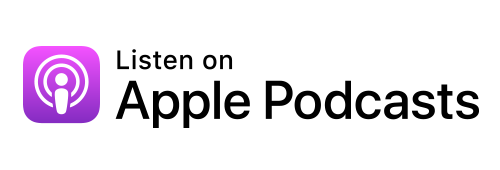

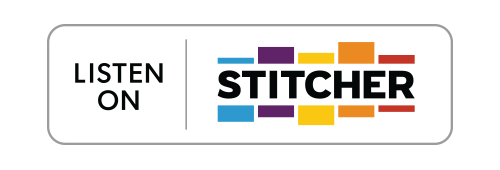


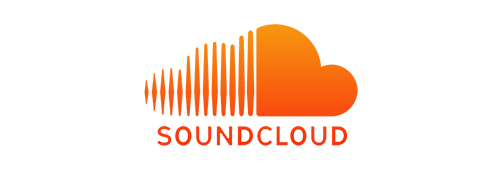

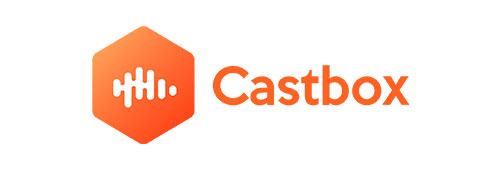
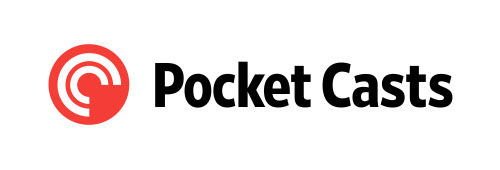
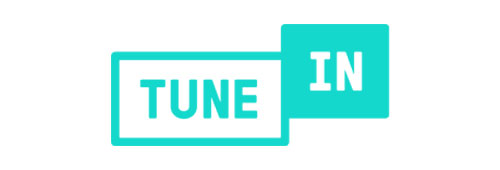
Leave a Reply